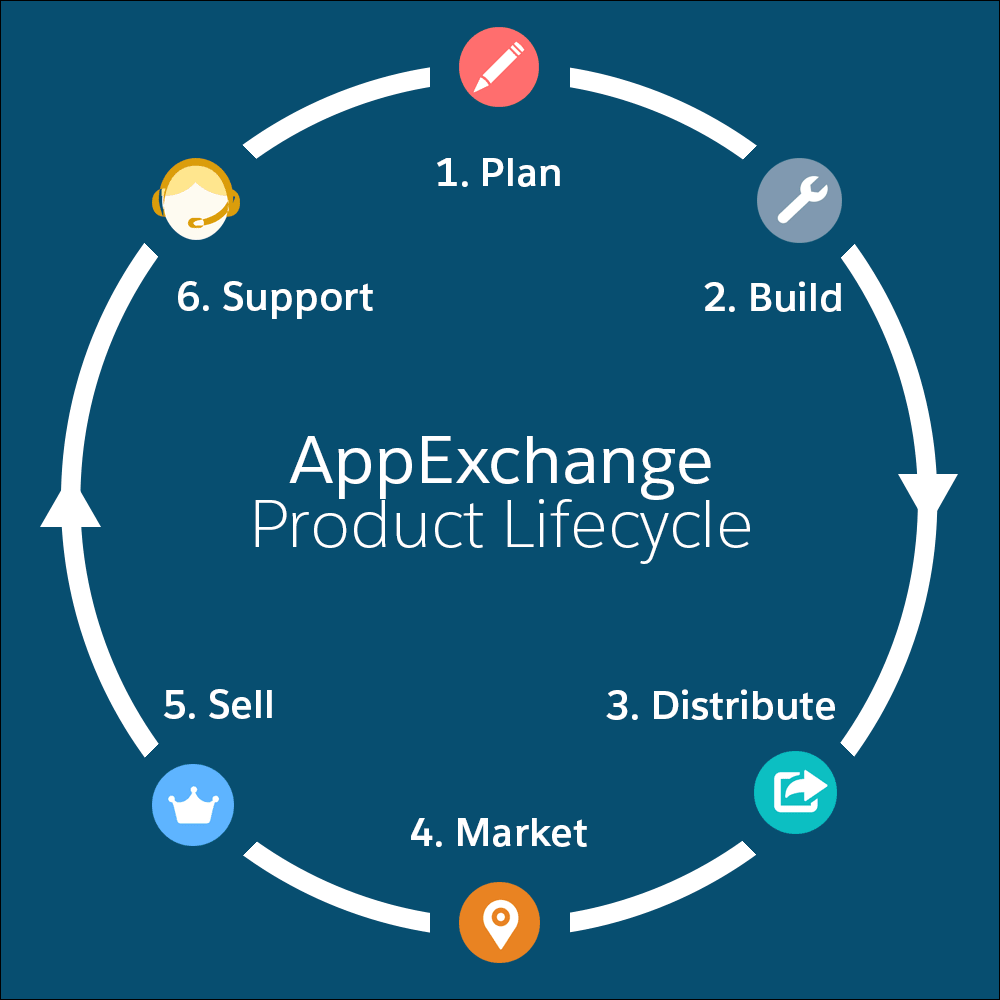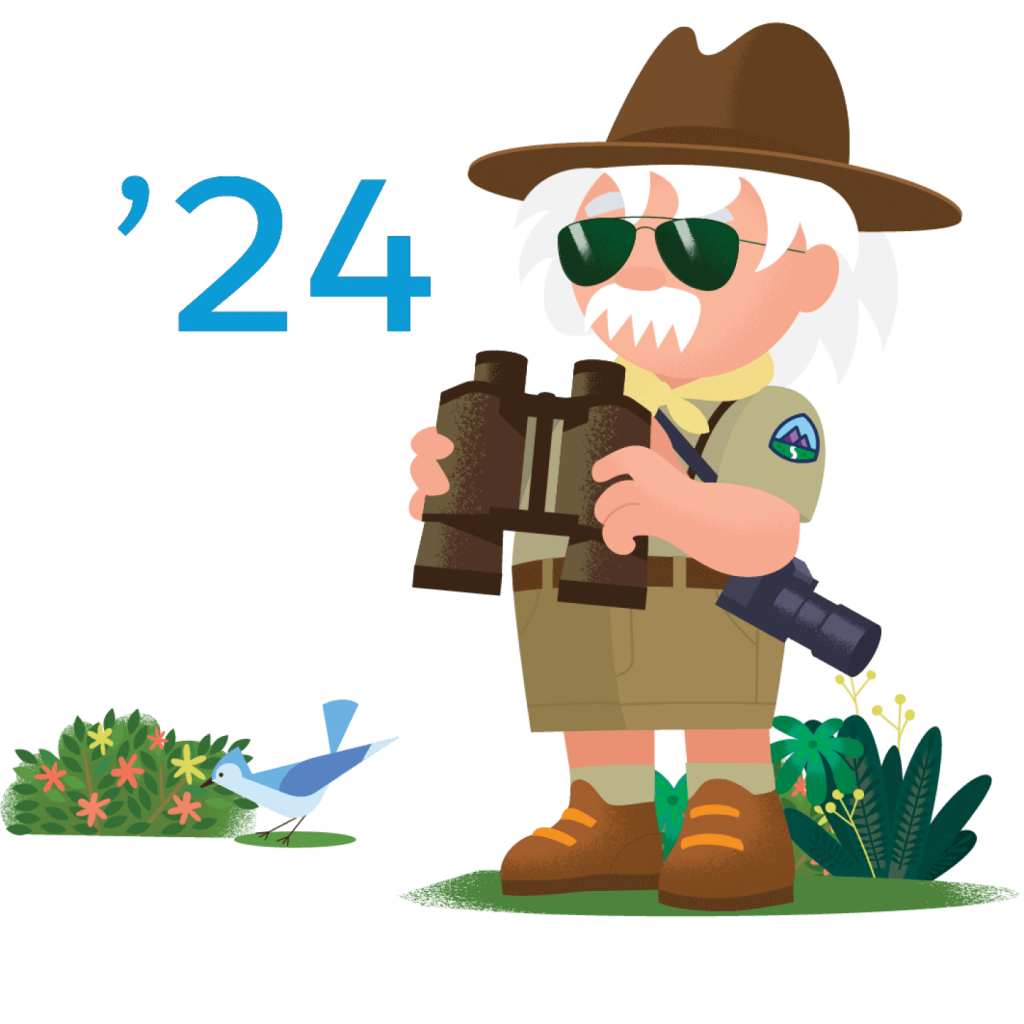
The AppExchange product development lifecycle is a series of stages that every app and Lightning component goes through. The challenge many companies face is streamlining their product build to go live and start generating revenue.
We’re breaking down the six steps of the product lifecycle and showcasing some useful tools and resources from Salesforce that will help at each stage.
Apps and Lightning Components Defined
Apps and Lightning components are what you can build and sell using the Salesforce platform. Simply put, apps solve business problems, and Lightning components are the building blocks of those apps.
Salesforce describes an app like this: “Think of an app as a customization of the Salesforce platform that you can distribute to others.” You’ve most likely built an app without even realizing it if you’ve customized Salesforce to get certain jobs done faster.
Lightning components allow you to reuse either existing snippets of code available from Salesforce and partners on the AppExchange. Or you can create custom components (when designed correctly) to its surrounding and improve customer experience. The Lightning Component Framework gives you the ability to mix and match to create the app you desire. Be sure to check out Salesforce’s Trailhead on Lightning component basics if you want to learn more.
The AppExchange Product Lifecycle
The AppExchange product lifecycle is the recommended journey that all apps and Lightning components follow. This cycle ensures that you are building a product that consumers want and have established the proper business processes to gain customers and support them after their purchase. The six steps of the AppExchange product lifecycle are:

Plan
The most important stage. This is where you learn as much as possible about the Salesforce platform and create a roadmap for your product. Salesforce recommends you start with these questions and continue to plan based on the conversations:
- Who comprises your target audience? Are you going after large enterprise customers? Mid-size? Small?
- What is your business strategy? When and how much must you sell to have a successful business?
- Which Salesforce editions will you support? For example, Professional, Enterprise, or Unlimited.
- Which license type do you want to use? There are many types of Salesforce licenses. It is important to understand early what parts of the Salesforce platform your application will interact with.
- What type of partner are you? When building your application and joining the Partner Program, you have to evaluate what partner type is right for you — including ISVforce or OEM Embedded — each partner type has implications and impacts to the application you build.
- Is your staff familiar with the Salesforce platform? If not, get them up to speed using resources like Trailhead.
- What is your strategy for ensuring that your offering is secure?
Connecting with Salesforce early in this process is vital to your long-term success on the platform. Join the partner community and fill out the relevant forms so you can connect with a Salesforce business development representative (BDR). This will initiate the process of working with the various roles at Salesforce, which we break down here.
Creating a well-developed plan and sticking to it is essential to ensure success. Salesforce has extensive resources to help you craft the perfect plan to set yourself up for a smooth product lifecycle. Some useful tools and resources include:
Build
In this stage, you develop your app or Lightning component and put it through rigorous tests to make sure that it provides a great customer experience. Development and test environments should be set up, with each customized for AppExchange partners.
The development environment is where you design and implement changes for your offering. The test environment is where you examine all aspects of the offering’s functionality to make sure that everything is working as designed. The Environment Hub is a great tool that allows you to consolidate development, testing, and packaging environments to one central location where you can create and manage them.
While your development team is creating the offering, your business team should be putting together the go-to-market strategy to help kick off a successful launch, which includes mapping out plans for marketing, sales, and support.
Distribute
Once the build is complete, it’s time to go live and make your app or Lightning component available to customers. To do this, you must package-up your application and upload it to the AppExchange. This includes one of the most stressful steps for new partners, the Security Review. After the review, your application receives one of three statuses: Pass, Provisionally Pass, or Not Approved. Many partners who build their app themselves do not pass the security review their first time, so don’t be disheartened. Keep in mind if you do fail the Security Review, Salesforce will provide some documentation of the errors; however, this list is not comprehensive and it is up to your engineers to interpret and contextualize the errors flagged.
Once Salesforce passes your app through the various reviews and approval processes, use the Publishing Console on the Partner Community page to create and manage your AppExchange listing, as well as view the analytics surrounding it. Your app or Lightning component is now live on the AppExchange and available to customers!
Market
Now that your app is live, you need to generate interest in it. Your business team should set in motion the marketing plans they created during the build stage. Attend partner events and reach out to your target audience to get them interested in the product. Work with the Salesforce Partner Marketing team to learn new strategies and develop campaigns.
Don’t forget to update, tweak, and measure your AppExchange listing regularly. The optimization of your listing is crucial to having your app found on the AppExchange. In the coming year, many updates are rolling out to provide deeper analytics and better insight.
Leverage Trialforce to offer free trials to your customers and prospects so they can experience your product’s capabilities and features before purchase. The License Management App allows you to track leads and manage licenses for your offering, giving you greater visibility into your sales and marketing processes.
Sell
The penultimate step. The goal here is to convert leads gathered through marketing efforts into paying customers — and ultimately renewals. Building an effective sales team is essential in converting these leads, as is having processes in place to qualify them efficiently and presenting compelling demos. During the Sell stage, continue to work with your Partner Account Manager (PAM) and the direct sales team at Salesforce to drive new leads. By attending partner events, you establish relationships within the ecosystem and can find ways to partner with other industry leaders — which drives more value for your customers.
With over 3,300 apps on the AppExchange, it is important to sell with Salesforce. This means understanding how Salesforce sells, where you fit in the Salesforce value prop, and presenting your product in a way that the Salesforce team can quickly understand.
The Channel Order App — a tool used to register sales with the AppExchange Partner Program easily — was recently updated to improve user experience and provide more transparency, improving the accuracy of orders. Also, take a look at the Partner Sales Aid to access valuable Salesforce content for building your sales kit.
Support
In this final stage, you ensure customer success with your offering by providing continuous technical support and updates. Developing a customer success framework establishes repeatable procedures that encourage customers to become advocates, leading to even more customers down the road.
Some useful tools help you improve your offerings are Push Upgrades and the Subscriber Support Console. Push Upgrades allow you to push patches (small bug fixes or tweaks to your application) or offer major upgrades (new features, components, or any other significant changes to your application). The Subscriber Support Console is a tool that provides your clients’ org information to you (with their approval) so that you can see their configuration data and troubleshoot within their org.
Summary
Taking the time to go step by step through each stage will not only help to ensure your product gets to market, but will also avoid many of the common pitfalls along the way. To be successful on the AppExchange requires a dedicated focus on each aspect of the Product Development Lifecycle, and, once launched, requires you to continue to iterate and evolve.
Having trouble getting through a stage? At CodeScience, we have the product development lifecycle down to a science. Contact us today to see how we’ve delivered 300+ products on the AppExchange.


